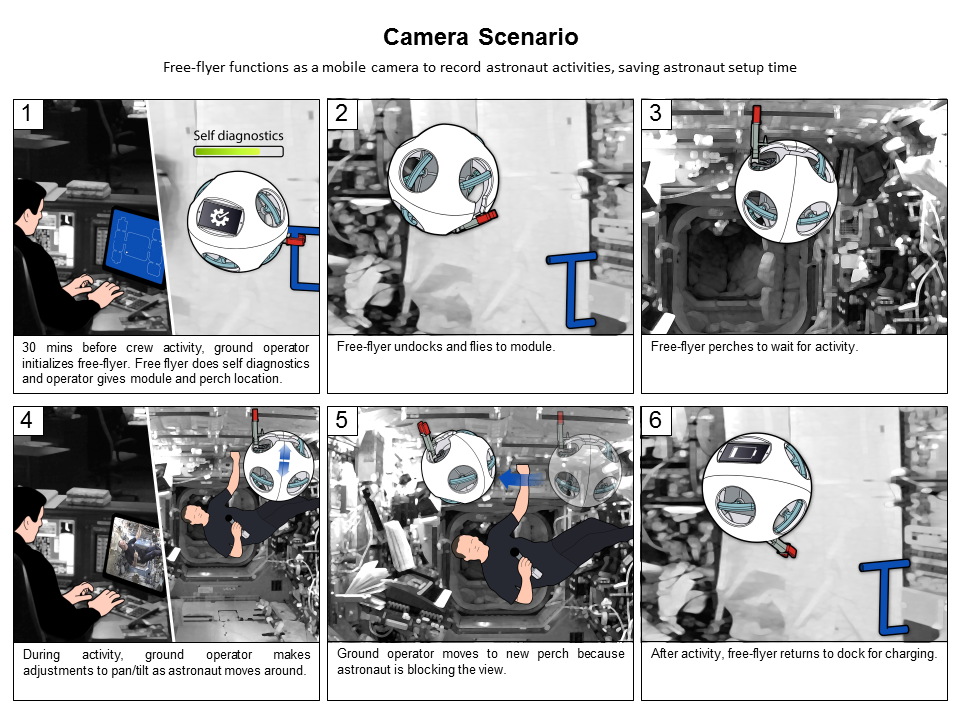NASA Contest Will Let You Name a Space Station Droid

NEW YORK — NASA needs your help to name a new space robot, and you could win some cash doing it.
NASA officials are asking space fans around the world to help name, and design a mission patch for, a new free-flying robot expected to launch to the International Space Station in 2017. The first-place winner of the challenge will receive $1,000. Officials with the space agency put out the call to any interested space fans during a packed session here at New York Comic Con on Saturday (Oct. 11).
"We have this new free-flying robot that we're building," Jason Crusan, director of NASA's Advanced Exploration Systems division, told a full house at Comic Con. "We don't know what to call it. 'Free-flying robot' sounds kind of boring and not all that exciting, so we're asking you to actually name the robot for us."
Second, third and fourth place also come with cash prizes. Second place will win $500, with third and fourth prize taking home $250 each. NASA has teamed up with Topcoder to organize the contest.
If an artist's depiction of the new space automaton is any indication, the new robot may look like something out of "Star Wars." In the artist's concept, the robot could appear as a small, ball-shaped droid that will use fans to move itself around the interior of the International Space Station. It is expected to be able to fly itself, or be operated by remote control.
The new free-flying bot would join a group of other free-fliers already on the station. NASA's SPHERES robots (the name is short for Synchronized Position Hold, Engage, Reorient, Experimental Satellites) are already used on the orbiting outpost. The program has been running for seven years, and is designed to help scientists test robotics hardware and software in microgravity.
The SPHERES robots and the new robot should be able to move around autonomously, but humans living and working on the orbiting outpost can also control the satellites.
Get the Space.com Newsletter
Breaking space news, the latest updates on rocket launches, skywatching events and more!
"As the push for manned and automated exploration of the solar system expands, NASA and the NASA Ames Research Center are creating controlled and autonomous robotic devices capable of supplementing flight crew," officials wrote in a description of the challenge on the Topcoder website. "These 'free-flying robots' will eventually extend the research and exploration capabilities of astronauts, as they are capable of working during off-hours and (eventually) in extreme environments."
To participate in the NASA challenge to name the new robot, space fans need to register with Topcoder. Participants will reach a checkpoint where they will receive feedback on their initial designs on Oct. 22, and the challenge ends on Oct. 27. Officials will announce the winners of the competition on Nov. 2.
To participate in the challenge and learn more about it, go to http://www.topcoder.com/challenge-details/30046039/?type=design&noncache=true.
Follow Miriam Kramer @mirikramer and Google+. Follow us @Spacedotcom, Facebook and Google+. Original article on Space.com.
Join our Space Forums to keep talking space on the latest missions, night sky and more! And if you have a news tip, correction or comment, let us know at: community@space.com.

Miriam Kramer joined Space.com as a Staff Writer in December 2012. Since then, she has floated in weightlessness on a zero-gravity flight, felt the pull of 4-Gs in a trainer aircraft and watched rockets soar into space from Florida and Virginia. She also served as Space.com's lead space entertainment reporter, and enjoys all aspects of space news, astronomy and commercial spaceflight. Miriam has also presented space stories during live interviews with Fox News and other TV and radio outlets. She originally hails from Knoxville, Tennessee where she and her family would take trips to dark spots on the outskirts of town to watch meteor showers every year. She loves to travel and one day hopes to see the northern lights in person. Miriam is currently a space reporter with Axios, writing the Axios Space newsletter. You can follow Miriam on Twitter.









